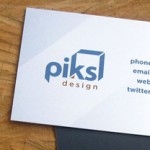What is a logo? In the corporate world it’s an image or a mark that represents a company, division, program or product. To keep this tutorial simple, let’s focus on the company logo. This logo will be many people’s first introduction to your company. We all know first impressions are important. And the weight of that makes people want to explain clearly what their company does—via their logo. That desire makes sense. However, the pursuit of that goal will usually cause you to pass over the most important functions of a logo, thus ending up with one that is totally ineffective. I’ll explain further by discussing what a logo is not.
A logo is not an illustration
There may be illustrative elements, but you’re not setting up a scene. You’re not creating a story that viewers will have to process. You’re not developing characters. You may have a single character as your logo (many companies do), but avoid having that character doing what it is your company does unless it’s very simplistic.
A logo is not a reference tool
Do you have a nice graphic showing a cross section of your product? Great! Be sure to use it in your literature. But don’t use it as your logo. Why not? Diagrams and charts are too detailed. And while they may clearly relay what it is you do, they can just as easily apply to one of your competitors as they have little personality. Plus they are simply not attractive. They are created to explain something—not put a face on your company.
In one sense logos act as nicknames. Perhaps your name is Jonathan Stewart Abernathy. That’s a pretty thorough title—but your friends call you Jon. And new people you meet are going to know you as Jon. They’ll get to know the full name eventually, but they don’t need to know that right off the bat. Can you imagine always referring to yourself as Jonathan Stewart Abernathy? It’s too much! It’s overkill. It’s too technical. You’re Jon.
Keep it simple. That’s the golden rule of design. If you try to be too literal, you’re going to end up with a busy mess. Apple computer does not sell apples. Yet they’ve created an iconic logo using a stylized image of an apple. The Rolling Stones didn’t use a guitar or music notes in their logo—they used a tongue. It relays an attitude. In general, the more you try to say with a logo, the more generic and/or convoluted the message becomes. Had the Rolling Stones used a guitar as their logo, it would have lost the impact and allure. It would not have set them apart from other bands.
That’s not to say your logo has to use something that’s not directly related to what you do. There’s nothing wrong with using a hammer in your logo as a carpenter. That hammer will be your company’s visual nickname, so your challenge is to make this everyday object distinct, yet simple. Lose the shackles of a literal design and you will have given your battle a much better chance of success.



